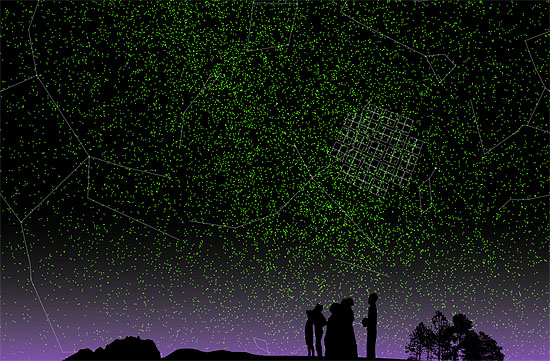Here’s a cool graphic from New Scientist with their best estimate of how many habitable planets there might be in the galaxy. They started with the 3,588 planets discovered by the Kepler space telescope and then pared this back to only smallish planets in the “habitable zone”—not too near their star to boil over and not too far away to be iceballs. That got them down to 51 planets. But that only counts the planets we could see because our view from Earth was directly on their ecliptic. Extrapolating to all the rest produces 22,500 Earthlike planets. And since Kepler only covered 0.28 percent of the sky and only looked out 3,000 light years, extrapolating yet again produces a final estimate of 15-30 billion possibly Earthlike planets.
That’s too many to show, so the picture below is a guesstimate of all the Earthlike planets “visible with a good pair of binoculars on a dark night.” The grid in the lower right is the area of the sky mapped by the Kepler telescope. The rest is extrapolation. It probably doesn’t mean much, but it’s kind of a pretty picture.
But if there are really that many planets, where are all the people?














